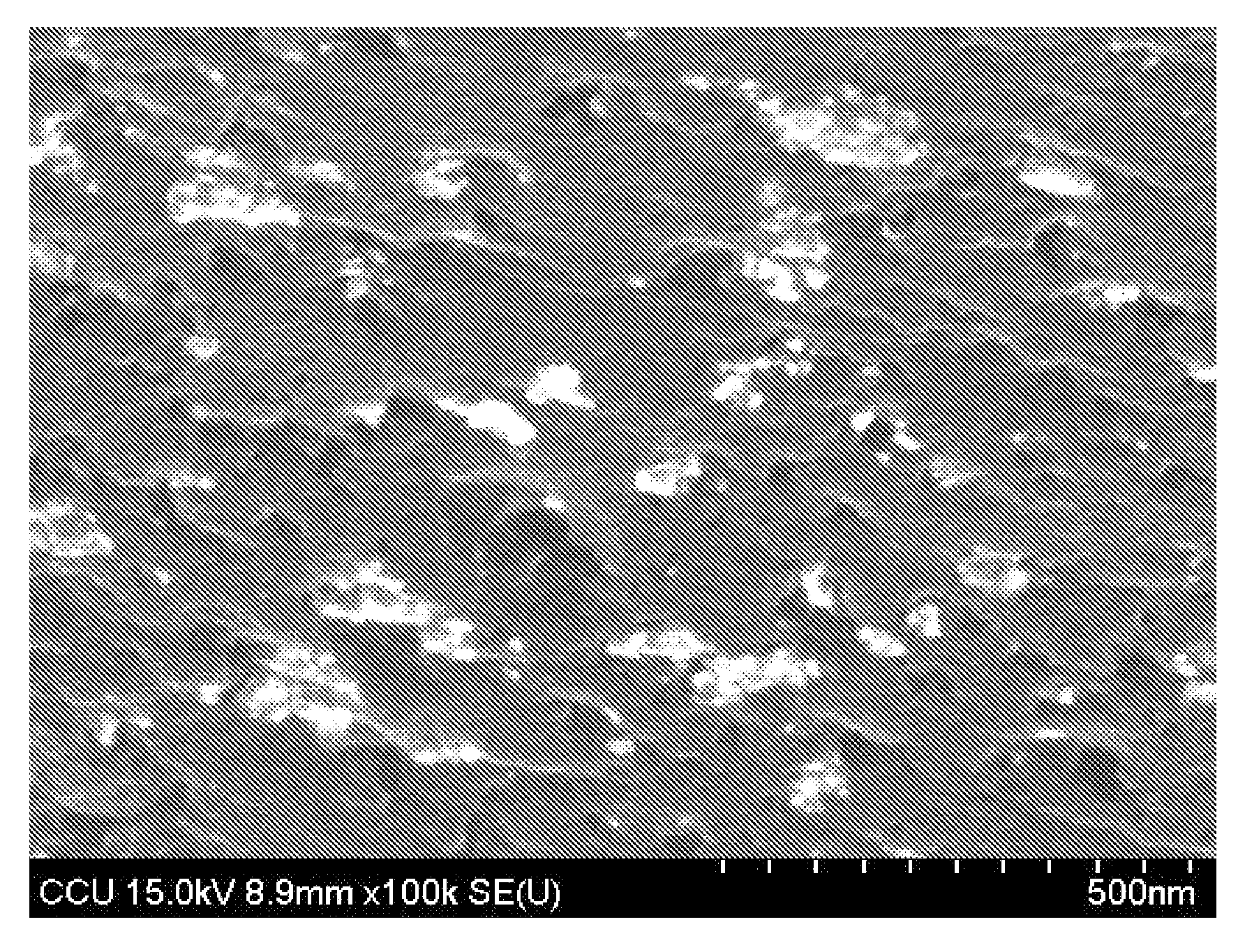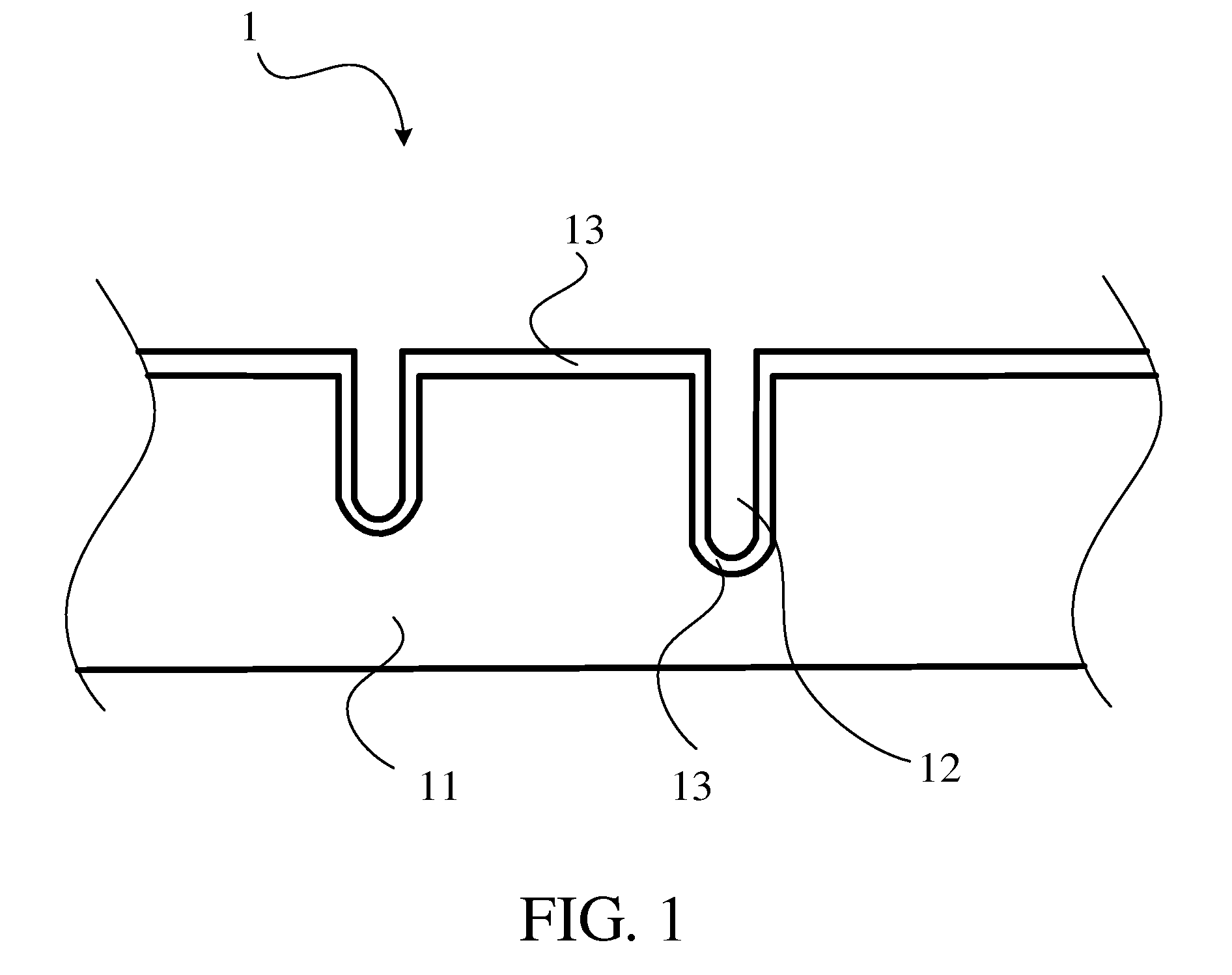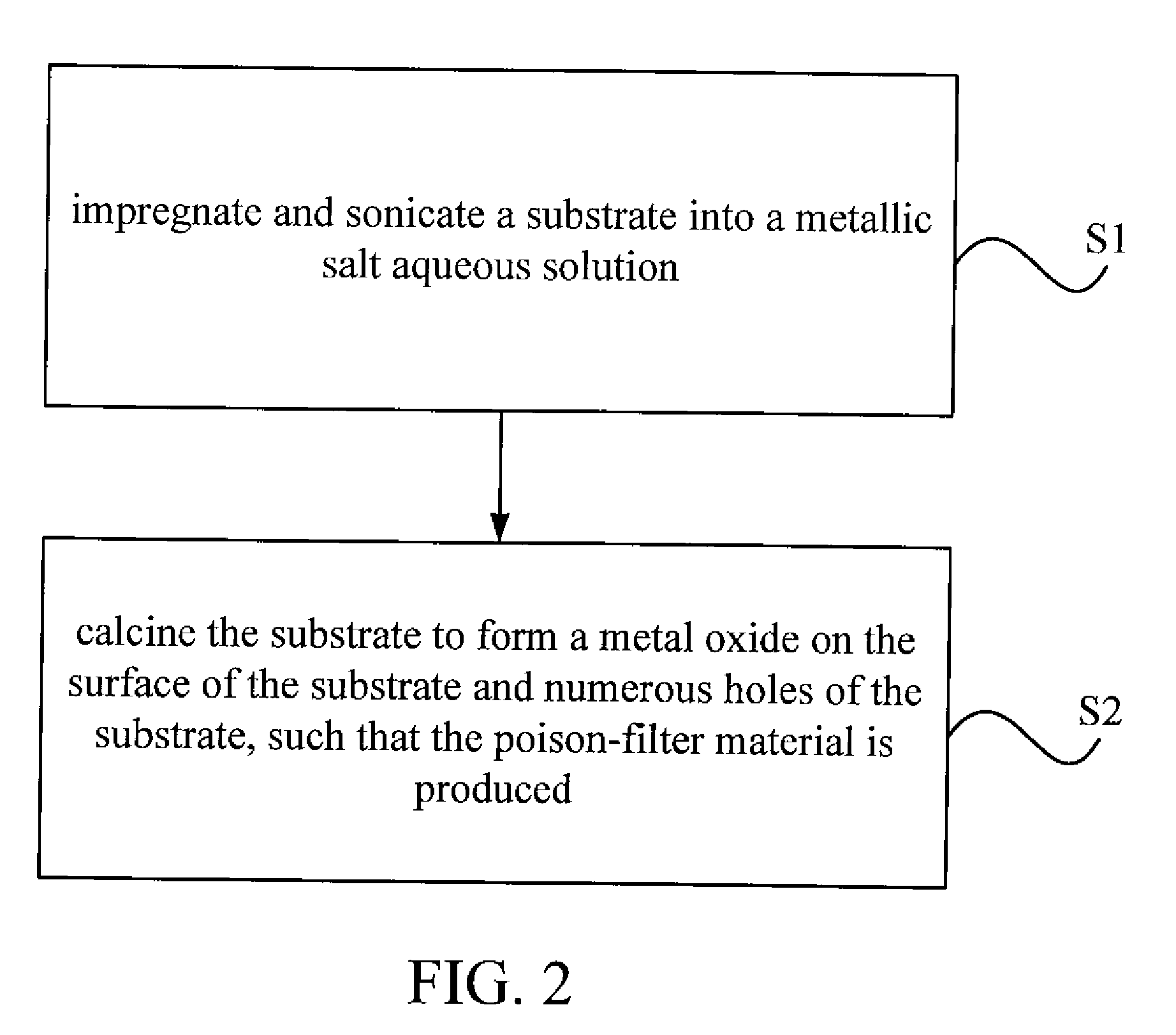Poison-filter material and production method thereof
- Summary
- Abstract
- Description
- Claims
- Application Information
AI Technical Summary
Benefits of technology
Problems solved by technology
Method used
Image
Examples
embodiment 1
rbon Fiber Fabric Impregnated with Cobalt Nitrate
[0050]After the activated carbon fiber fabric is impregnated in a cobalt nitrate solution, the absorption ability per unit of the impregnated material is slightly larger than the un-impregnated material. PAN-precursor activated carbon fiber fabric is adopted as a raw material, and experimental sample is prepared according to the pre-treatment and impregnation procedure disclosed by the invention. The impregnation solution is the cobalt nitrate aqueous solution with a concentration of 0.25 mole / L. Test results are shown in Table 1, the breakthrough time T5% is 36 minutes, the absorption ability per unit is 0.3392 mmol / g-ACC, and the absorption ability of the activated carbon fiber fabric in this embodiment is 1.4 times as much as original material.
embodiment 2
rbon Fiber Fabric Modified by Tricobalt Tetraoxide
[0051]After the activated carbon fiber fabric is impregnated in a cobalt nitrate solution, tricobalt tetraoxide is formed by a high-temperature calcination, to form an absorption material modified by tricobatl tetraoxide. The absorption ability per unit of this material is distinctly larger than the un-treated activated carbon fiber fabric. Phenolic resin-precursor and PAN-precursor activated carbon fiber fabric are respectively taken as raw materials, and experimental samples are prepared according to the pre-treatment, impregnation, and calcination procedures disclosed by the invention. The impregnation solutions respectively are cobalt nitrate solutions with a concentration of 0.125 mole / L and 0.25 mole / L. The calcination temperatures respectively are 300° C., 450° C., and 600° C. Test results are shown in Table 2.
TABLE 2activated carbon fiber fabric modified by tricobalt tetraoxide absorbsacetaldehyde gasconcen-absorptiontrationa...
embodiment 3
rbon Fiber Fabric Impregnated with Aluminum Nitrate
[0052]After the activated carbon fiber fabric is impregnated in an aluminum nitrate solution, the absorption ability per unit of this treated material is distinctly larger than the un-treated activated carbon fiber fabric. Phenolic resin-precursor activated carbon fiber fabric is taken as raw material, and experimental samples are prepared according to the pretreatment and impregnation procedure disclosed by the invention. The impregnation solution is a cobalt nitrate solution with concentration of 0.125 mole / L. The testing results are shown in Table 1, the breakthrough time T5% is 32 minutes, the absorption ability per unit is 0.5510 mmol / g-ACC, and the absorption ability of the activated carbon fiber fabric in this embodiment is 3.0 times as much as original material.
PUM
| Property | Measurement | Unit |
|---|---|---|
| Temperature | aaaaa | aaaaa |
| Time | aaaaa | aaaaa |
| Time | aaaaa | aaaaa |
Abstract
Description
Claims
Application Information
 Login to View More
Login to View More - R&D
- Intellectual Property
- Life Sciences
- Materials
- Tech Scout
- Unparalleled Data Quality
- Higher Quality Content
- 60% Fewer Hallucinations
Browse by: Latest US Patents, China's latest patents, Technical Efficacy Thesaurus, Application Domain, Technology Topic, Popular Technical Reports.
© 2025 PatSnap. All rights reserved.Legal|Privacy policy|Modern Slavery Act Transparency Statement|Sitemap|About US| Contact US: help@patsnap.com



